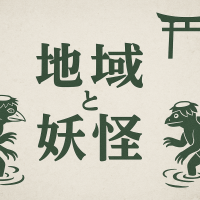
Touring the Seven Wonders of Edo: Commonalities and Regional Characteristics of the Mysterious Events Seen in Honjo, Kawagoe, and Bakurocho

My Encounter with the Seven Wonders of Bakurocho
Recently, I participated in the local exchange event "Chiiki Kousaten Shokudo" held in Bakuro-cho, Tokyo. The theme was "The Relationship between Yokai-ya and the Community." At the end of the event, during a lively social gathering with local people, I had the opportunity to talk about "The Seven Wonders of Bakuro-cho."
Actually, before the event, I was researching the monsters of Bakuro-cho, and when I couldn't find any, the people of X gave me some reliable information about the Seven Wonders of Bakuro-cho.
This experience sparked my interest in the Seven Wonders of Tokyo once again. After returning home, I had a lot of questions in my mind, such as "How many of the Seven Wonders are there in Tokyo?" and "Are there similar stories in other areas?", so I decided to look into it.
What are the Seven Wonders?
The "Seven Wonders" literally means "seven wonders," but in reality there are often eight or nine. This is because the number "seven" has long been treated as a number symbolizing mystery and perfection.
In Edo, there were ``Seven Wonders of ◯◯'' in each region, and the most famous ones are the Seven Wonders of Honjo, the Seven Wonders of Yanaka, the Seven Wonders of Hatchobori, the Seven Wonders of Senju, and the Seven Wonders of Kawagoe.
Overview of the Seven Wonders of Honjo
The Seven Mysteries of Honjo, located in Sumida Ward, include the "Sending-off Lantern," "Leave It Behind," "Raccoon Music," "Leaveless Chestnut Tree," "Foot-Washing Mansion," "Extinguishing Fireball," and "One-Leaf Reed." The most famous of these is the "One-Leaf Reed," a mysterious phenomenon in which a reed growing along the Sumida River has only one leaf on one side.
Overview of the Seven Wonders of Kawagoe
Meanwhile, Kawagoe in Saitama Prefecture is also known for its Seven Wonders. Among them, the "One-leaf Reed" appears, just like in Honjo. According to legend, a princess who served Kawagoe Castle lost her life in the midst of war, and her grudge caused the reeds growing in the marshland to take on a single leaf.
A common structure seen in "One-leaf Reed"
It is very interesting that the same motif of supernatural phenomena is passed down in different regions. What they have in common is that they are located near water and have the tragedy or grudge of a woman as their background. They also clearly show the characteristic of Japanese culture, which is to retell natural phenomena as supernatural phenomena.
The Seven Wonders are a microcosm of local culture
Each of the Seven Wonders is like a miniature that reflects the history, climate, and memories of the local area. Some of the mysteries, like Bakuro-cho, are reminiscent of the urban chaos, while others, like Honjo and Kawagoe, strongly reflect emotions and views on life and death.
A trip to visit the Seven Wonders is also a journey to rediscover local culture. There may be one of the Seven Wonders hidden in your town that you have not yet discovered.







No comments yet.